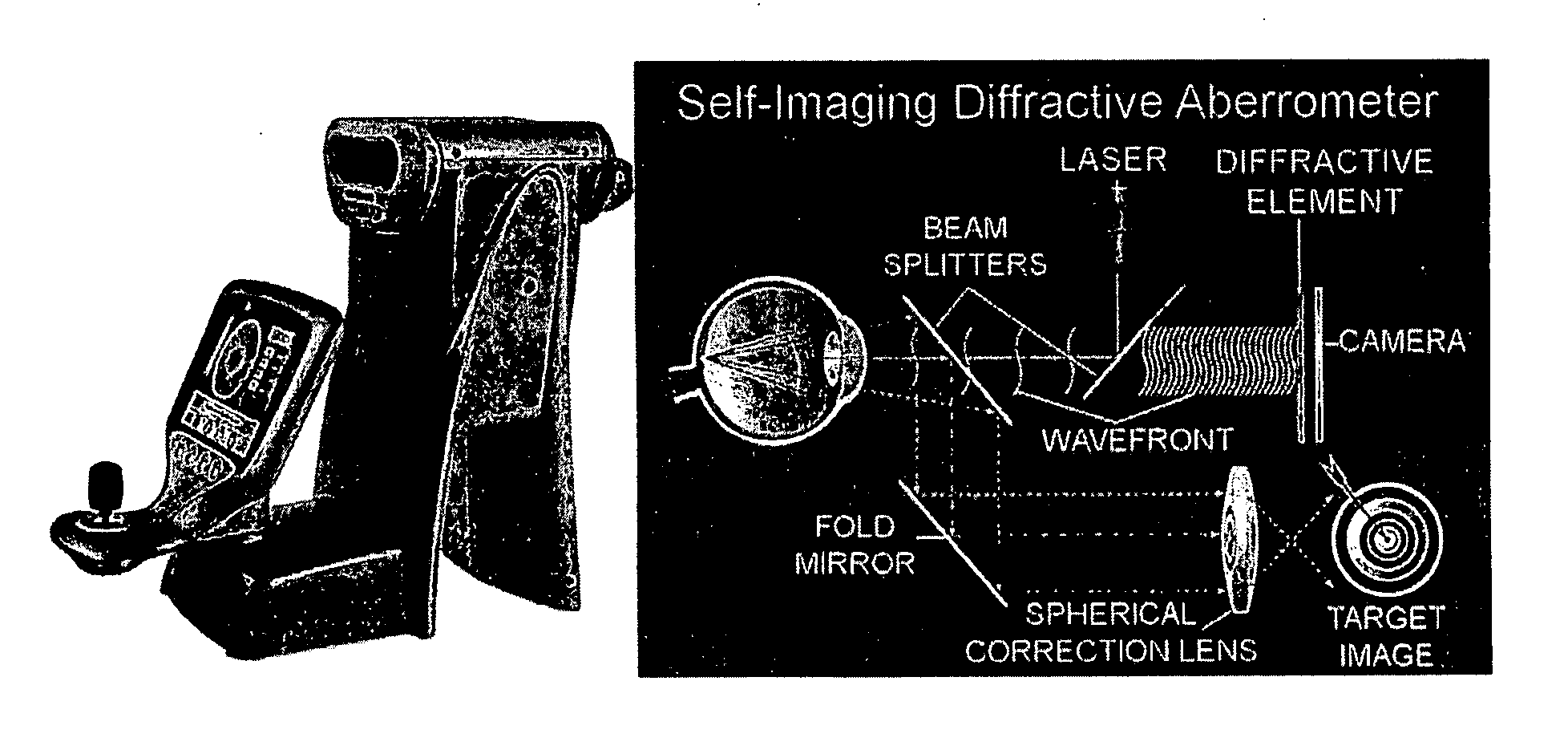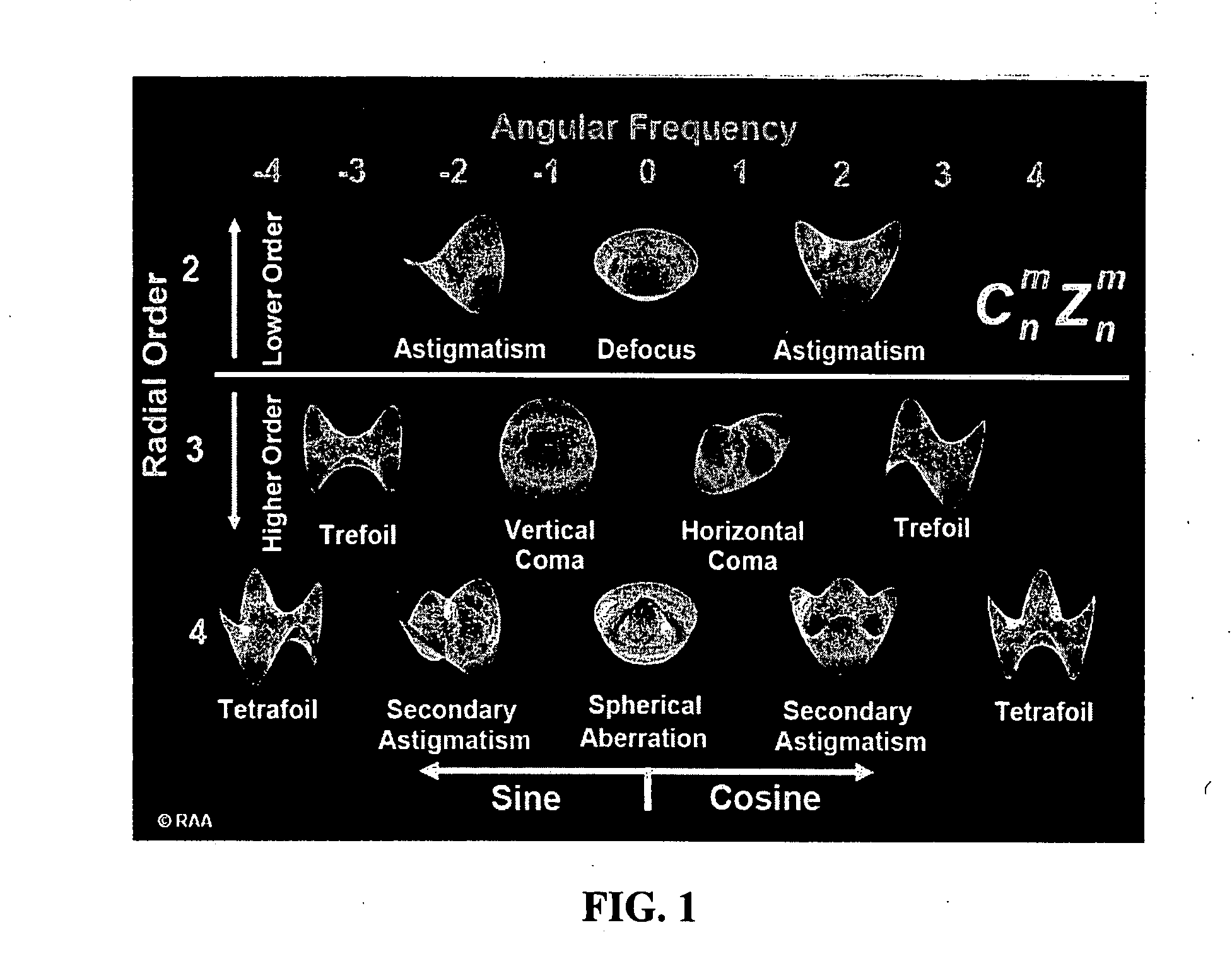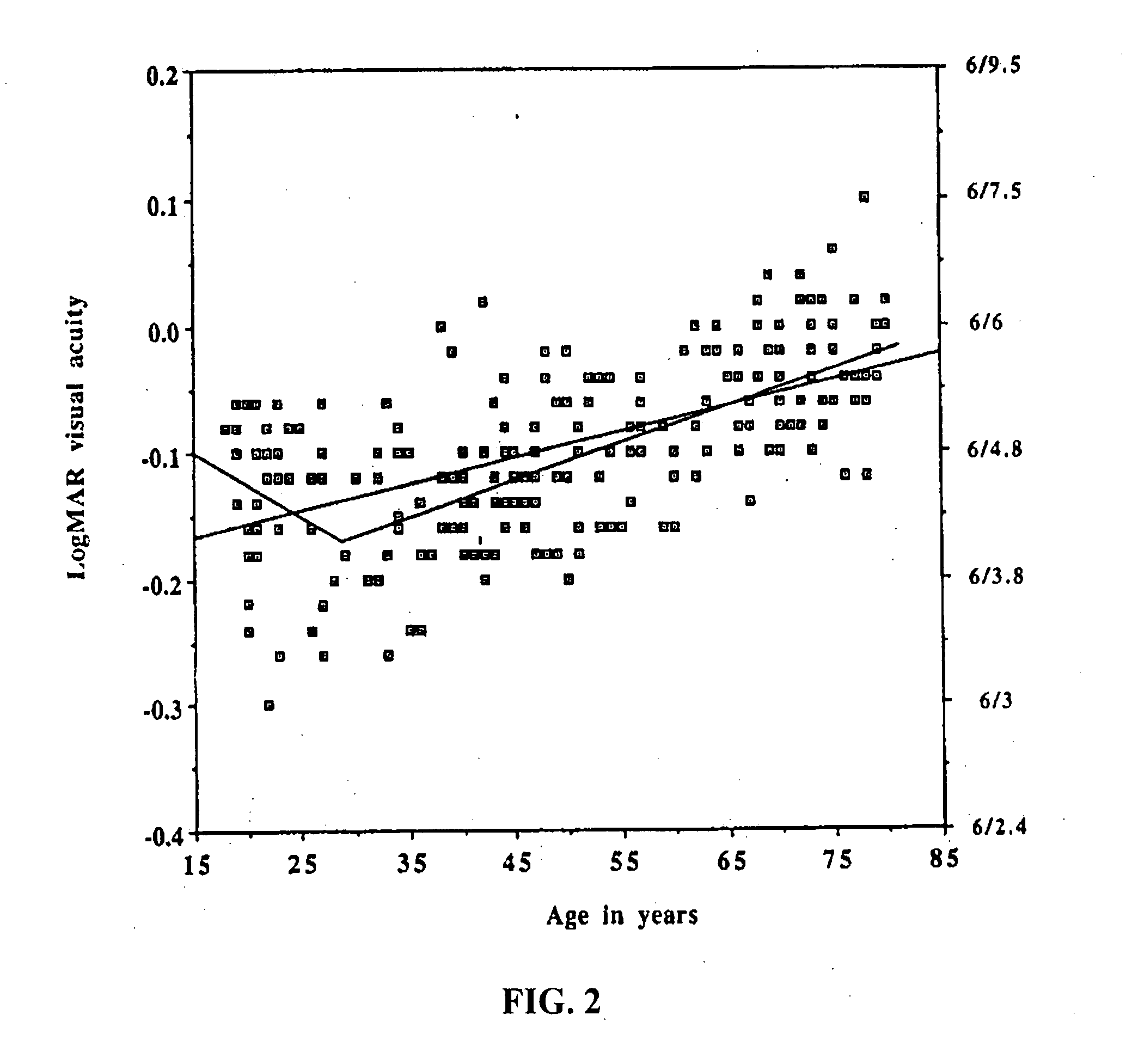High-order aberration correction for optimization of human visual function
a human visual function and optimization technology, applied in the field of human visual function optimization, can solve the problems of large 1.2-diopter sphere error, no mechanism for changing the amount of high-order aberrations, and represented optical errors, so as to improve contrast sensitivity, low-contrast visual acuity and vernier acuity, the effect of improving contrast sensitivity
- Summary
- Abstract
- Description
- Claims
- Application Information
AI Technical Summary
Benefits of technology
Problems solved by technology
Method used
Image
Examples
Embodiment Construction
[0033] Currently, aggressive high-order aberration correction can only be implemented over a restricted field-of-view. Therefore devices that naturally operate with a restricted field-of-view are ideal candidates for this type of optical correction. Another category where high-order aberration optimization is expected to be of major benefit involves low light conditions where the pupil size is significantly increased. Optical aberrations generally increase dramatically with pupil diameter and can therefore have a larger impact on vision. Four modes of high-order wavefront correction in devices are included in the present invention. They are the following: [0034] Binoculars [0035] Rifle Scopes [0036] Night Vision Devices [0037] Laser Eye Protection Spectacles / Goggles
[0038] The first three naturally employ a restricted field-of-view. The last two modes intrinsically involve reduced levels of light entering the eye, forcing increased pupil sizes in all conditions. The first two modes ...
PUM
 Login to View More
Login to View More Abstract
Description
Claims
Application Information
 Login to View More
Login to View More - R&D
- Intellectual Property
- Life Sciences
- Materials
- Tech Scout
- Unparalleled Data Quality
- Higher Quality Content
- 60% Fewer Hallucinations
Browse by: Latest US Patents, China's latest patents, Technical Efficacy Thesaurus, Application Domain, Technology Topic, Popular Technical Reports.
© 2025 PatSnap. All rights reserved.Legal|Privacy policy|Modern Slavery Act Transparency Statement|Sitemap|About US| Contact US: help@patsnap.com



